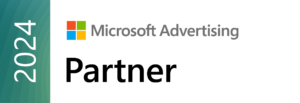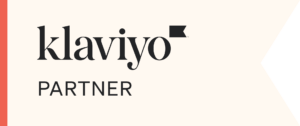In the dynamic world of digital advertising, brands, and their media buyers are constantly on the lookout for the most effective platforms to invest their advertising dollars. With a plethora of social media platforms available, it’s crucial to understand which ones offer the best value for specific metrics.
In this post, we’ll delve into the best platforms for the most cost-effective reach, overall conversions, repeat customers, and the fastest-growing social platform.
Most Cost-Effective Reach: Facebook
Despite the emergence of numerous social media platforms, Facebook remains a dominant force when it comes to cost-effective reach. With its vast user base of 2.989 billion monthly active users (according to DataReportal.com) across multiple platforms (i.e., Facebook, Instagram, WhatsApp, etc.)
Facebook offers advertisers the ability to target specific demographics with precision. Large reach with precision is integral to Facebook targeting capabilities such as their Lookalike audience feature because it allows advertisers to target a brand new audience that closest resembles their desired audience (i.e., email lists, past purchasers, and/or site visitors) with great accuracy.
The platform’s detailed targeting options, combined with its massive audience, mean that advertisers can achieve extensive reach without breaking the bank through too much trial and error. Additionally, Facebook’s ad auction system ensures that ads are delivered to the most relevant audience, maximizing the value of every dollar spent.
Best for Overall Conversions: Instagram
Instagram, a subsidiary of Meta, has emerged as a powerhouse for conversions, especially for brands targeting a younger demographic.
The platform’s visual-centric nature combined with features like shoppable posts and Instagram Stories ads make it a hotbed for driving sales.
Users on Instagram are not just passive scrollers; they’re active shoppers. The seamless integration of product tags and checkout options ensures that the path from discovery to purchase is as frictionless as possible. Product tagging allows retailers to offer products for sale directly on a post in a user’s feed. If a user has their payment information saved to the app, they can buy products that interest them as they’re scrolling the app. In today’s consumer economy, the less friction between showing products to a new audience and getting them to buy, the better.
Best for Engagement and User Retention: X (Twitter) and YouTube
When it comes to fostering genuine engagement and retaining users, X stands out. This platform is a hub for real-time conversations, debates, and discussions. Brands that tap into trending topics or create interactive content like polls and Q&A sessions can witness a surge in engagement rates. This can be extremely valuable from a media buying perspective sheerly due to time spent on the app. If users are engaging more, time spent on the app increases. This allows not only more time to serve ads to prospective customers, but also more data for the X algorithm to optimize those ads over time.
Moreover, X’s algorithm prioritizes fresh, relevant content, ensuring that users are constantly fed with information that keeps them hooked. The platform’s retweet and quote tweet features amplify the reach of content, often leading to viral moments.
For brands aiming to build a community of engaged followers and retain them with consistent interactions, X is the go-to platform. Its unique blend of immediacy and interactivity makes it a fertile ground for brands to not just advertise, but also to converse and build lasting relationships with their audience.
YouTube, on the other hand, reigns supreme at maintaining user attention. YouTube is a platform designed to keep users attentive and engaged for longer periods of time. YouTube does this by recommending high amounts of videos that are related to your most recent YouTube searches. Additionally, the platform offers a “next-up” queue that offers the next video while the user is already watching a video. This tends to keep users watching longer. The platform takes the “strike-while-the-iron-is-hot” approach and is arguably the best at doing so. As an advertiser, this is valuable digital real estate.
If a brand can catch their audience’s attention before they click the daunted “Skip Ad” button, the likelihood of that user interacting with the brand is significantly higher – especially if the ad seems organic to the content the user is already watching.
Best for Repeat Customers: Pinterest
Pinterest is often overlooked in the advertising world, but it’s a goldmine for brands looking to cultivate repeat customers. Users on Pinterest are planners. They create boards for future projects, wish lists, and more. This forward-thinking behavior means that they’re more likely to return to a brand or product they’ve pinned. Advertisers can tap into this by creating compelling Pins that not only drive initial sales but also foster brand loyalty, leading to repeat purchases.
Fastest Growing Social Platform: TikTok
TikTok has taken the world by storm. In just a few years, it has amassed a user base that rivals some of the most established social media platforms. Its unique short-form video content format has resonated with Gen Z and millennials, making it a prime platform for brands targeting these demographics. While it’s still in the early stages of its advertising journey, the rapid growth of TikTok cannot be ignored.
The limited audience data and targeting capabilities make it much more difficult for advertisers to optimize campaigns. This may cause larger timeframes of trial and error, thus making overall spend less efficient. Nonetheless, brands that establish a presence on TikTok now are poised to reap the benefits as the platform continues to expand its advertising capabilities.
The landscape of social media advertising is ever-evolving. As a media buyer, it’s essential to stay updated with the latest trends and platform capabilities. While Facebook, Instagram, and YouTube continue to be stalwarts in the advertising world, platforms like Pinterest and TikTok offer unique opportunities for brands to connect with their audience in novel ways.
By understanding the strengths of each platform and aligning them with specific advertising goals, media buyers can ensure that they’re making the most of their advertising budget.







